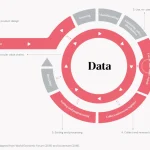
Customer Relationship Management is an important component of a business’s success. It allows businesses to better understand and interact with customers. Customer feedback can reveal operational and systemic improvements. The goal of CRM is to provide the best customer experience possible. Making adjustments in response to customer feedback demonstrates that the business cares about its customers.
CRMs help companies improve communication with customers and retain existing customers. By using technology to automate processes and organize customer information, CRMs can help businesses improve sales and customer satisfaction. They can also automate salespeople’s activities and help managers track team performance. In addition to these benefits, CRMs can help companies understand the behavior of their sales leads and develop strategies to optimize interactions with them.
CRMs have a standard set of features, but some are more advanced than others. For example, some feature advanced customer segmentation or marketing automation. Another feature that can stand out is ad tracking. Depending on your goals, you can choose CRMs with features that are relevant to your business. Customers can be acquired in many ways, but they must first be convinced to do business with you.
While CRMs have traditionally been seen as sales tools, they have since expanded to include customer service. This new segment of CRM is becoming a vital part of managing the customer relationship holistically. For example, a customer might raise an issue in a social media forum such as Twitter, or they might raise it over the phone. With a CRM platform, the customer can follow the conversation across all channels, while sales and service teams can access the information they need to provide the best service. This is particularly important if a company has salespeople out on the road.
Another important feature of a CRM is collaboration. It allows all teams to share customer data and collaborate with each other. For instance, marketing and sales teams will always have access to information collected by other departments. In addition, the sales and customer support teams will have access to updated customer information. A collaborative CRM helps to track the preferences of each customer.
Another feature of CRM is that it can be used for high-level strategizing. By analyzing customer data, companies can make their employees more efficient. They can also improve processes across customer-facing departments. In other words, CRMs are designed to provide businesses with a high-level view of their customers’ lives.






